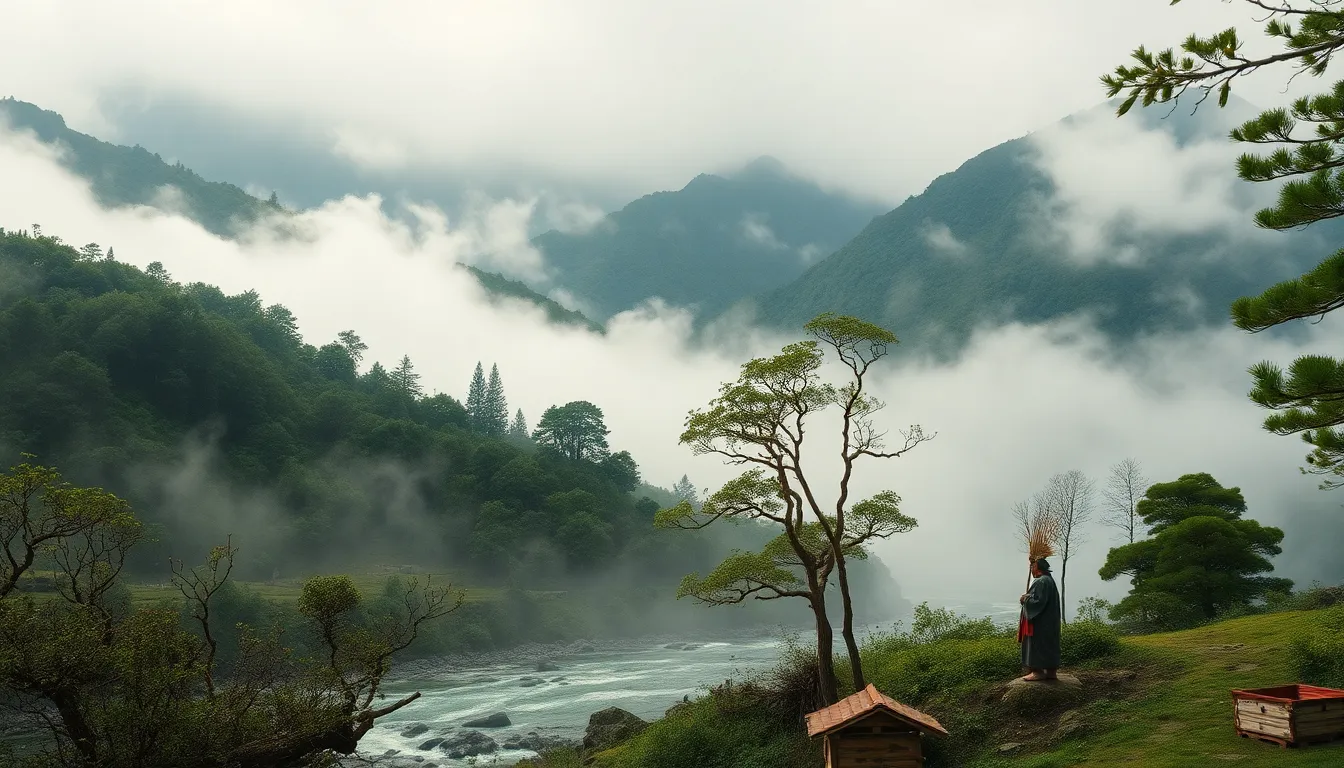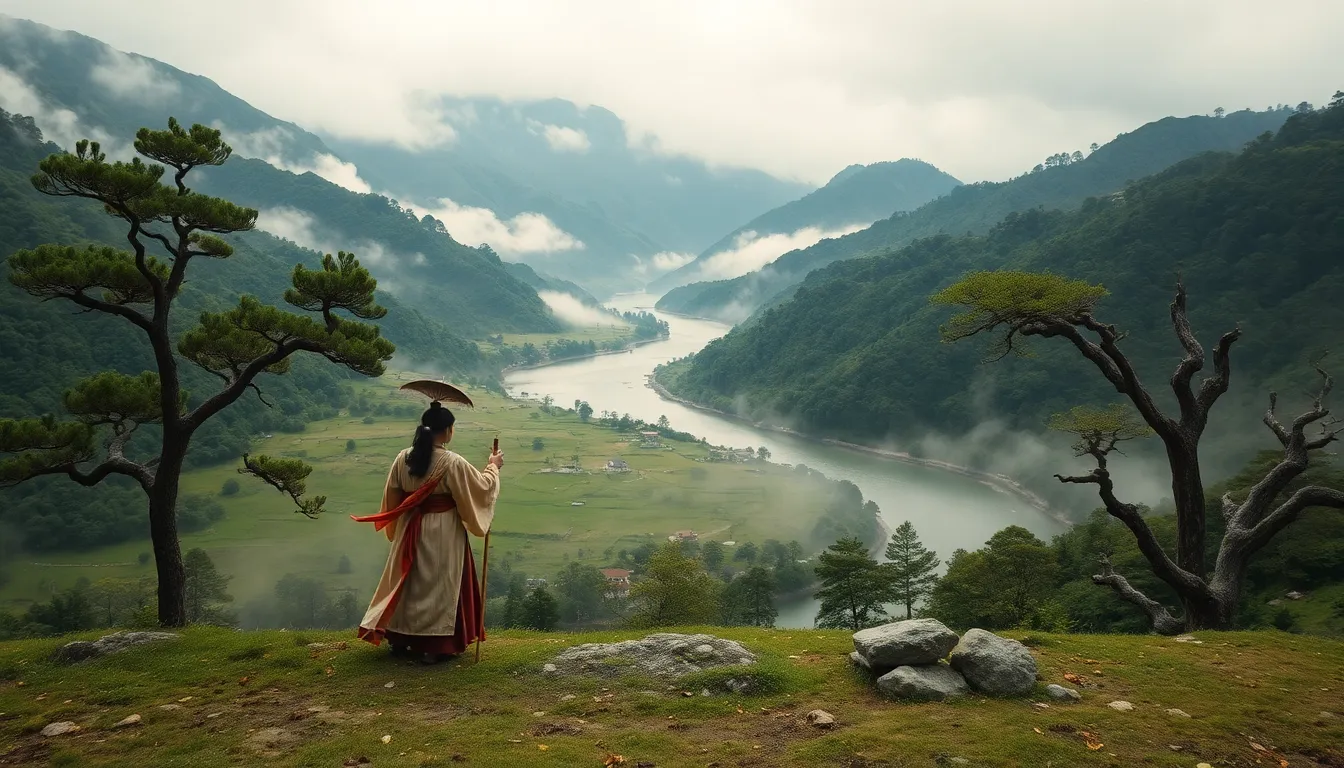Deep in the heart of Japan lies a mystical realm where ancient traditions and modern life collide—the Mist Valley. This enchanting place isn’t just a pretty postcard; it’s home to the elusive Japanese mist valley shamans. These spiritual guides possess a unique blend of wisdom and whimsy, harnessing the power of nature to heal and enlighten.
Table of Contents
ToggleOverview of Japanese Mist Valley Shaman
The Japanese mist valley shamans serve as intermediaries between the spiritual and physical worlds. These practitioners possess deep knowledge of traditional healing techniques, often drawing from ancient rituals and natural elements. They guide individuals seeking clarity, wisdom, and balance in their lives.
Experience matters for these shamans. Many have spent years in training, learning the subtleties of nature’s energy and its impact on human well-being. Their playful nature complements their serious responsibilities, as humor often plays a significant role in healing processes.
Ceremonies conducted by mist valley shamans typically involve offerings, chants, and meditative practices. Participants engage in these rituals to align with natural forces. Seasonal changes often influence the timing of these ceremonies, allowing practitioners to honor and celebrate the cycles of life.
Connection to the earth remains vital for these shamans. Many believe that through communion with nature, they can tap into its transformative energies. They encourage followers to embrace the environment, promoting sustainability and mindfulness.
Community involvement defines the role of shamans. They strive to create strong networks within local populations, ensuring that wisdom and practices endure through generations. Collaboration with other spiritual guides enhances their understanding and broadens the scope of their teachings.
Japanese mist valley shamans exemplify a harmonious blend of tradition and modernity. Their presence contributes to the preservation of cultural heritage while addressing contemporary challenges. Through their teachings and practices, they foster a sense of unity among individuals in search of healing.
Historical Context


The historical roots of shamanism in Japan run deep, intertwining with the island nation’s spiritual practices.
Origins of Shamanism in Japan
Shamanism in Japan traces back to ancient animistic beliefs. Early communities engaged with nature, attributing spirits to various elements like mountains, rivers, and trees. The Ainu people, indigenous to Japan, played a significant role in shaping these traditions. They honored nature through rituals and offerings, establishing a framework for spiritual practices. Over time, these beliefs merged with Buddhism and Shinto, creating a rich tapestry of spiritual significance. This integration preserved vital aspects of shamanism, allowing spiritual guides to thrive despite modernization. Understanding this origin highlights the enduring connection between Japanese culture and nature, essential for contemporary shamans.
Influence of Mist Valley Culture
Mist Valley culture significantly shaped local spiritual traditions and community practices. This region, with its unique climate and geography, fosters a distinct environment for spiritual exploration. Shamans draw inspiration from the area’s natural beauty, incorporating landscape elements into their rituals. Local myths and legends further enrich this cultural tapestry, providing a heritage that informs contemporary practices. The emphasis on seasonal changes directly influences shaman practices, allowing spiritual leaders to align their ceremonies with nature’s cycles. Community engagement, rooted in shared beliefs, strengthens bonds among individuals seeking guidance. Through this interplay, Mist Valley culture reinforces the importance of harmony between nature and spirituality in modern life.
Key Practices of Japanese Mist Valley Shaman
Japanese mist valley shamans engage in various practices that reflect their deep spiritual connections. Their rituals and ceremonies play a crucial role in their work, often designed to align with the rhythms of nature.
Rituals and Ceremonies
Shamans conduct ceremonies that include offerings, chants, and meditation aimed at invoking spiritual energies. These rituals often correspond to seasonal changes, reinforcing their commitment to honor life cycles. Celebrations may feature traditional music, dance, and the sharing of sacred stories, allowing participants to connect more deeply with their community and the natural world. Through these practices, individuals experience moments of clarity, healing, and transformation, as the shaman facilitates a bridge between the earthly and spiritual realms.
Tools and Symbols
Various tools and symbols assist shamans in their practices, each carrying specific meanings. Items like crystals, herbs, and ritual masks often find a place in their ceremonies. Crystals are believed to channel energy, while herbs serve as offerings to nature spirits. Ritual masks symbolize different aspects of identity and connection to ancestral spirits. Additionally, the presence of natural elements, such as stones and water, reinforces the shaman’s bond with the earth. These tools enhance the overall experience, fostering a harmonious relationship between the shamans, their followers, and the environment.
Beliefs and Spirituality
Japanese mist valley shamans embody deep spiritual beliefs rooted in nature and ancestral connections. Their practices reflect a profound relationship with the environment surrounding them.
Connection to Nature
Shamans view nature as an integral part of their spiritual journey. They emphasize understanding and connecting with natural elements like mountains, rivers, and forests. This bond fosters a sense of respect for the earth and its energies. Many shamans conduct rituals outdoors, allowing the surroundings to influence their healing practices. Seasonal changes guide ceremonies, aligning these practices with the rhythms of nature. By honoring these cycles, shamans harness transformative energies that promote balance and harmony in their communities.
Ancestor Worship
Ancestor worship remains a significant aspect of the shamans’ spiritual framework. They believe that honoring ancestors strengthens ties to the spiritual world. Rituals often include offerings made to the spirits of those who came before, seeking guidance and blessings. Shamans rely on ancestral wisdom to inform their healing techniques and spiritual practices. This connection provides insight into life’s challenges, helping individuals navigate personal struggles. By invoking ancestral spirits, shamans cultivate a supportive network that enriches their community’s spiritual foundation.
The Role of Shaman in Society
Shamans in the Mist Valley of Japan play essential roles within their communities. They serve as healers and spiritual guides, providing expertise based on their deep understanding of nature and ancient rituals.
Healing and Guidance
Shamans employ traditional healing techniques to address both physical and emotional issues. Through ceremonies and rituals, they create a safe space for individuals to seek support. Various methods, such as herbal remedies and energy work, reflect their commitment to holistic healing. Each ritual helps participants connect with natural energies promoting clarity, balance, and peace. They encourage introspection and self-discovery, guiding individuals toward personal growth and resolution of life’s challenges.
Cultural Preservation
Shamans play a critical role in preserving cultural traditions and practices in the Mist Valley. They transmit ancient knowledge through storytelling and rituals, ensuring that historical teachings remain relevant. Each ceremony emphasizes local customs and celebrates seasonal cycles, connecting the community to its roots. Their collaboration with other spiritual guides strengthens communal ties, fostering a sense of unity and shared history. By honoring ancestral practices, shamans maintain cultural identity amidst modernization, reinforcing the importance of heritage within contemporary society.
Japanese mist valley shamans embody a unique fusion of ancient wisdom and contemporary spirituality. Their deep connection to nature and commitment to community healing highlight the vital role they play in preserving cultural heritage. Through rituals and ceremonies that honor the cycles of life, these shamans guide individuals on their spiritual journeys, fostering personal growth and resilience.
As they navigate the challenges of modern life, the teachings of mist valley shamans offer valuable insights into achieving balance and harmony. Their practices remind us of the importance of nature in our lives and the enduring power of ancestral connections. By embracing these traditions, individuals can find clarity and purpose in an ever-changing world.

